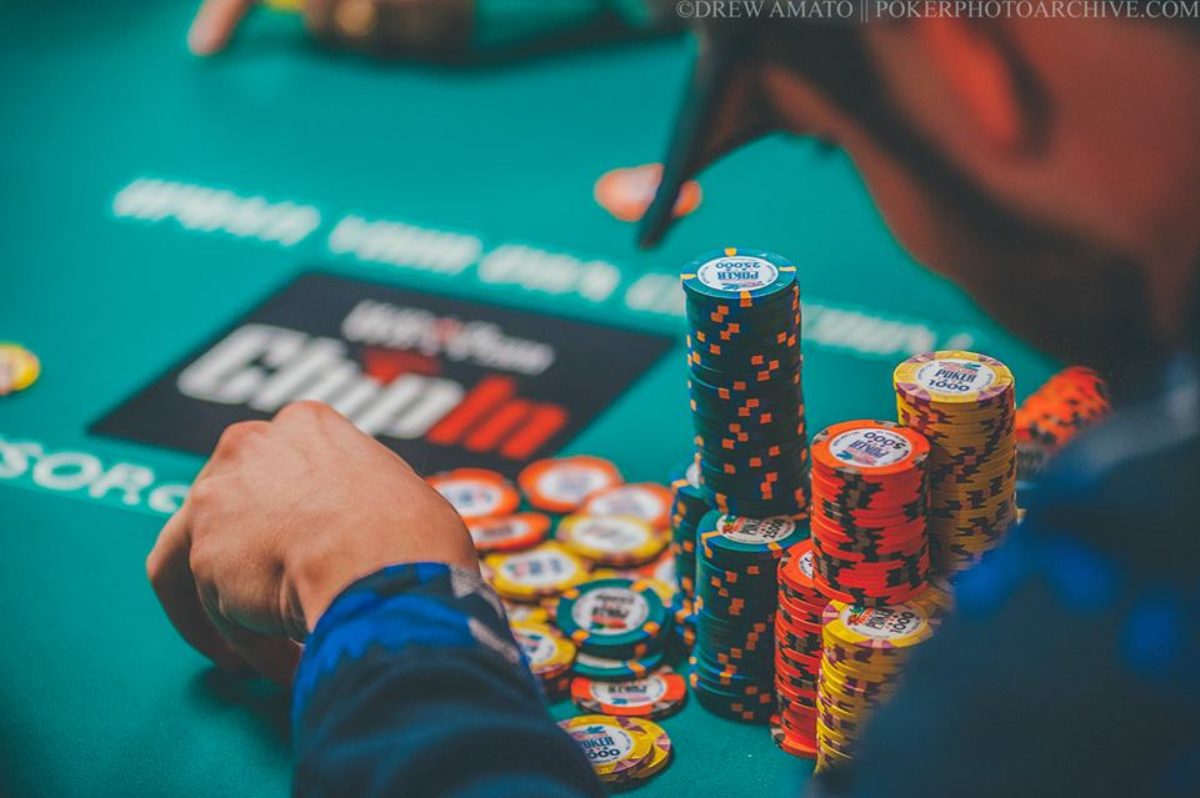Poker Live Tournament Strategy
It’s definitely no longer easy to make big bucks in online poker tournaments as it once was. Fortunately, we still have another option available to us.
Poker Tournament Strategy 4: Ladder At The Final Table If I am lucky enough to take a big stack to the final table, I continue with my aggression – to a point. I am willing to open and 3-bet light just as before, but I am less willing to get all in light for a couple of reasons. There are essentially five key strategic areas that you will need to focus on when you play Texas Hold’em cash games. For Texas Hold'em tournament strategy, there exists a whole set of other poker tournament tips. While there are many things that add up to good poker strategy, we feel that these are the Top Five for new or intermediate players.
In the days that followed Black Friday, all the way back in April 2011, US-based players embarked on a mass exodus to the live arena. Everybody was talking about how soft the games were, but that kind of chat has steadily died off.
Live cash games have definitely gotten tougher, but what about live tournaments?
Live tournaments at the lower limits are still super soft and worth checking out. This is where all the fun players looking for one night’s glory go. The lad’s night out kind of thing.
Serious professionals will be lurking for sure, but unlike the cash tables tournaments will have plenty of people donating EV to your cause. Some of these guys will be treating the event like a video poker session.
Tight Is Right
The first thing you will likely notice is how different the pre flop ranges can be compared to online
. You must work out quickly who is what type of player.
Another major red flag that you will see a lot in live games is the prevalence of limpers. While limping is seen as more normal in live tournaments than cash games, it is still a great way to pick up on who the weakest players at your table are.
Stacking off ranges can vary wildly compared to online games, particularly with deep stacks.
Start Early
Many players think the early stages of a tournament are not important. It is true that the real profit is made from your late stage decisions, but this isn’t the same as agreeing that you can ignore all of the +EV opportunities that come in the early game.

Just think about all of the new players who are playing a live poker tournament for the first time. Do you think they will deliberately avoid playing for the first hour or so? Absolutely not.
Abuse Your Fold Equity
When the stacks get to a medium depth, you will be in a prime position to exploit unaware players by jamming all-in over their open raise. Because the stacks are starting to get shallow, the amount of chips you win compared to what you started the hand with make it a great result whenever you can pull this off.
You will notice that players tend to defend their big blind more often in a tournament. For this reason you must pay special attention to who calls wide and who doesn’t adjust.
Keep Your Eyes Open
Any advice on crushing live poker tournaments is incomplete without a brief discussion on tells. The ability to read a player by their physical actions is invaluable when it comes to live poker.
The best part of all of this is that recreational players will only be thinking about their “poker face”. All the other tells that can be picked up through glancing and the movement of chips give away so much more.
Best Live Poker Tournament Strategy

The first thing that you want to do before playing in a video poker tournament is figure out the rules and other details.
This is important because you must decide what kind of strategy is needed to reach the prize money. You must also figure out what tourneys best suit you.
Here are the standard types of video poker tournaments:
- Buy-In Without a Fee – These events see 100% of players’ buy-ins go directly into the prize pool.
- Buy-in with a Fee – The casino that’s hosting the tournament takes a small fee from each buy-in. In most cases, the fee includes an extra 5%-10% on top of the buy-in (e.g.,$100 + $10).
- Open Freeroll – A freeroll is aptly named, since you don’t have to pay anything to enter. The “open” aspect refers to how anybody at the casino can enter because there aren’tany requirements.
- VIP Freeroll – These tournaments also don’t require players to pay an entry fee. The catch is that you have to be a certain VIP status to be invited.
You should use your specific situation to decide what type of events you’re willing to play.
A well-funded video poker player who wants to compete for big prize money will find open freerolls to be a waste of time.
This is because open freerolls can draw hundreds or thousands of players. And the prize pools are generally small, meaning a tiny percentage of the field will cash.
On the other hand, any gambler with a small bankroll should consider open freerolls because these offer a chance to win real money.
Another consideration comes in with VIP freerolls. Specifically, you want to decide whether the freeroll prize pools make it worth attaining a specific loyalty status.
Live Low Stakes Poker Tournament Strategy
You should also look at the other rewards being offered in the program to see if it’s worth meeting the VIP status requirements.
When it comes to buy-in tournaments, you obviously want to play in events where you don’t have to pay extra fees. But keep in mind that tourneys with house fees can be the most lucrative in termsof prize pools.
As for the rules, you need to know if a tourney has a time limit, credit limit, hand limit, or a combination of these. Here are different formats featured in video poker tournaments:
- Timed – These tournaments last for a specific number of minutes (e.g., 20 minutes). The winner is the player with the highest score when the time is up.
- Credit Limit – Entrants continue playing until their credits run out. The winner is determined by who has the most credits when everybody is finished playing their round.
- Credit and Time Limit – Ends when the time limit is reached. But players can also run out of credits before the time limit.
- Hand Limit – The tournament runs for a specific number of hands (e.g., 300 hands). The winner is the player who has the highest bankroll when the hands are finished.
Timed tournaments are the most common in video poker. These see you play as quickly as possible in hopes of winning the most credits.
Live Satellite Poker Tournament Strategy
For example, you may be given 30 minutes to rack up as many credits as possible. When the half hour is up, players’ scores are tallied, and a winner is determined.
Live Poker Tournament Strategy
You want to play as quickly as possible in any timed video poker tourney. This ensures that you give yourself the best possible chance to win lots of credits.
Poker Live Tournament Strategy Calculator
Hand limit events are also fairly common. An example would be a tournament that lasts for 500 hands.
Live Mtt Poker Tournament Strategy
You should take your time with these tourneys because there’s no pressure and you want to make the best decisions.